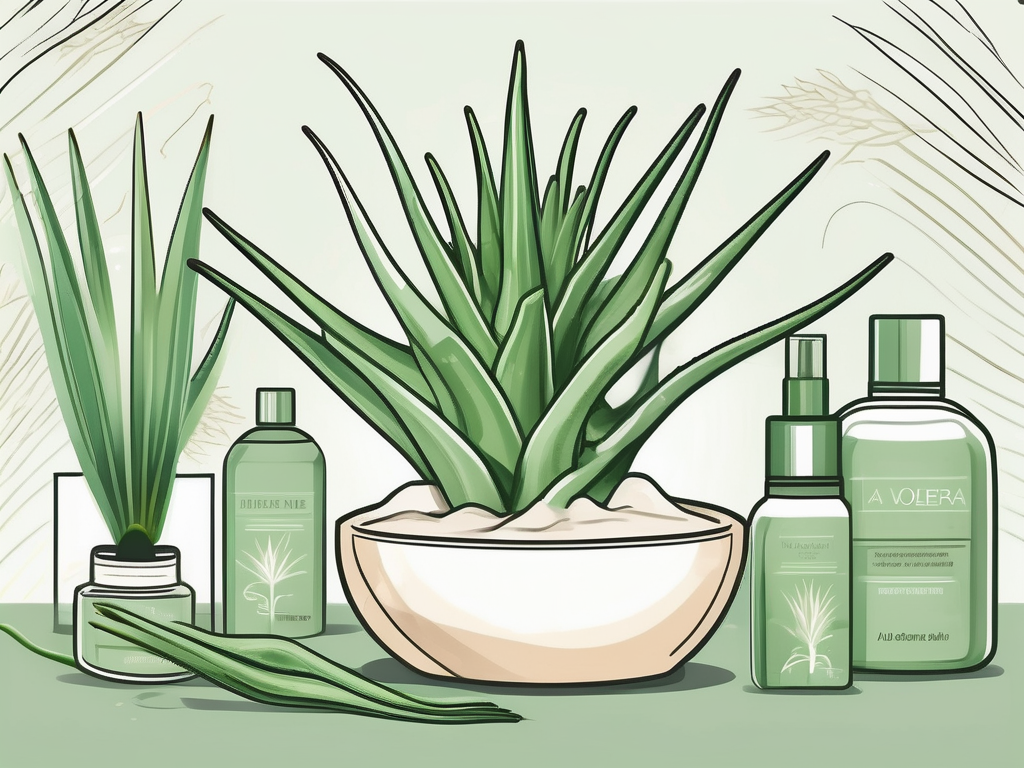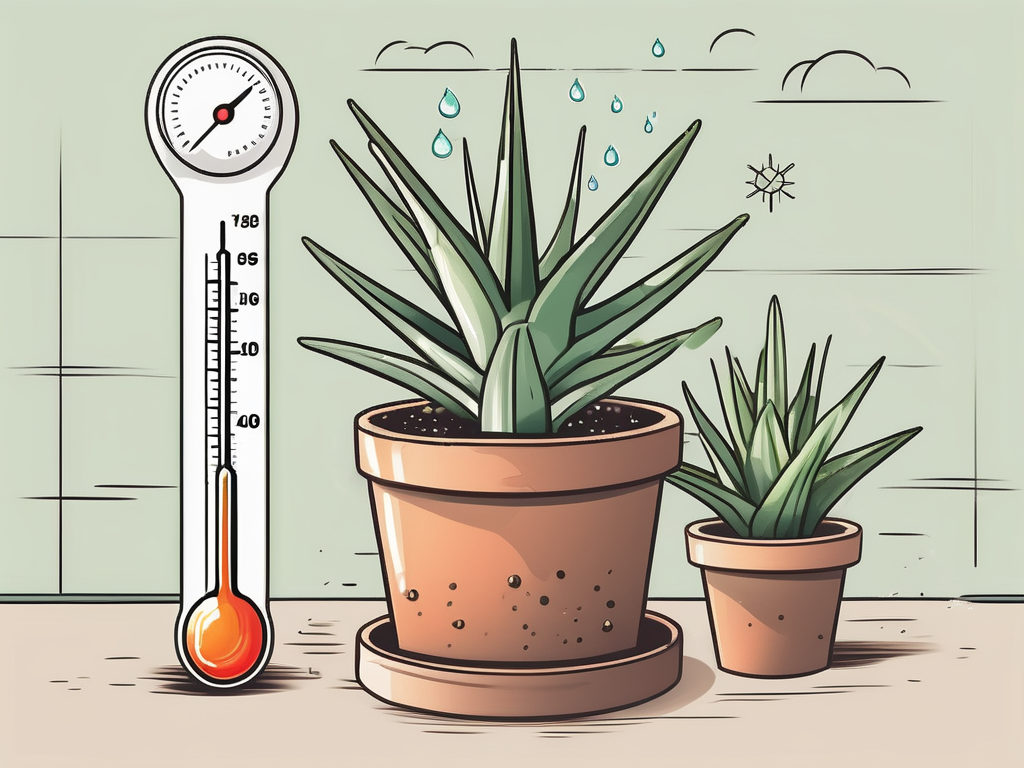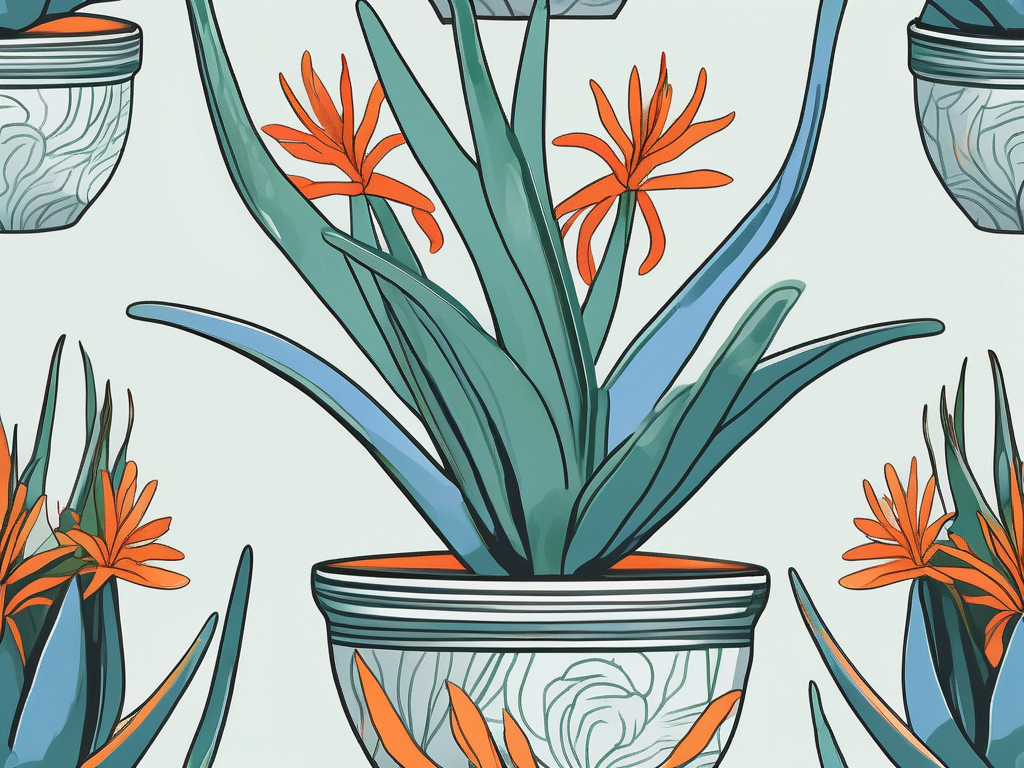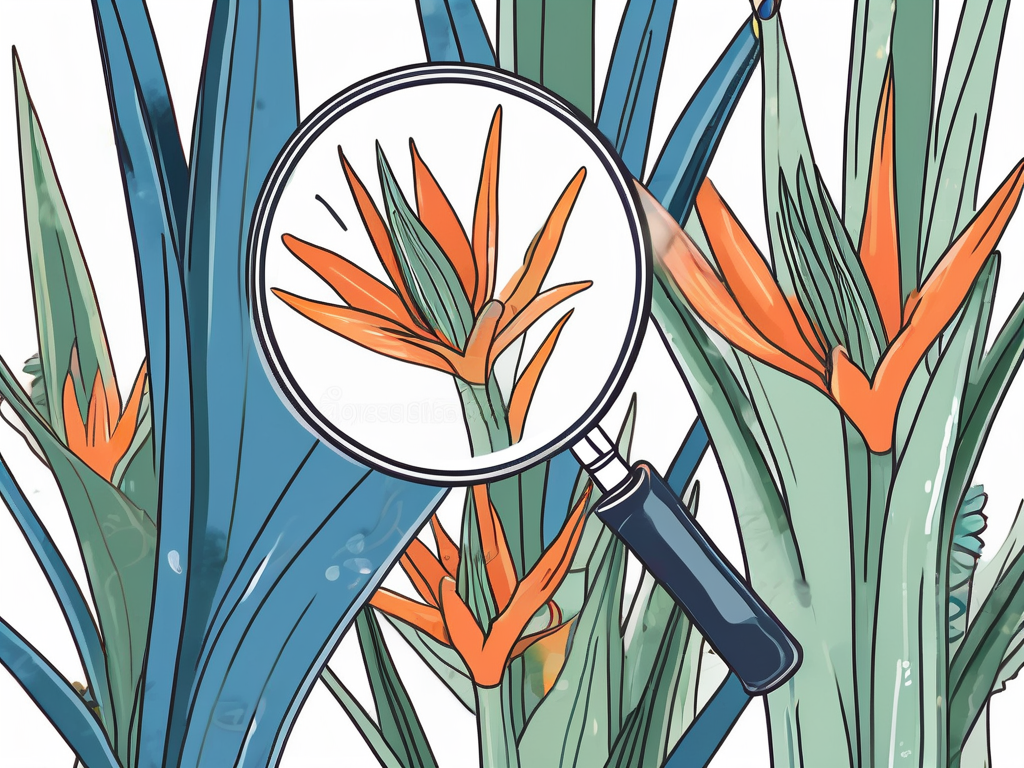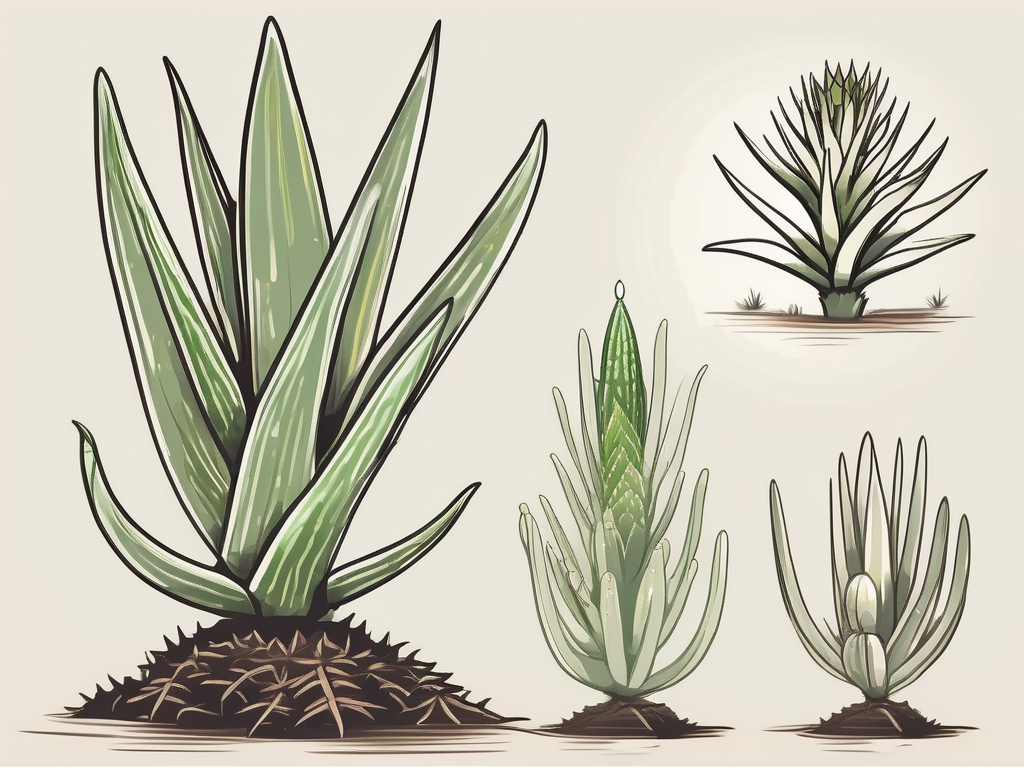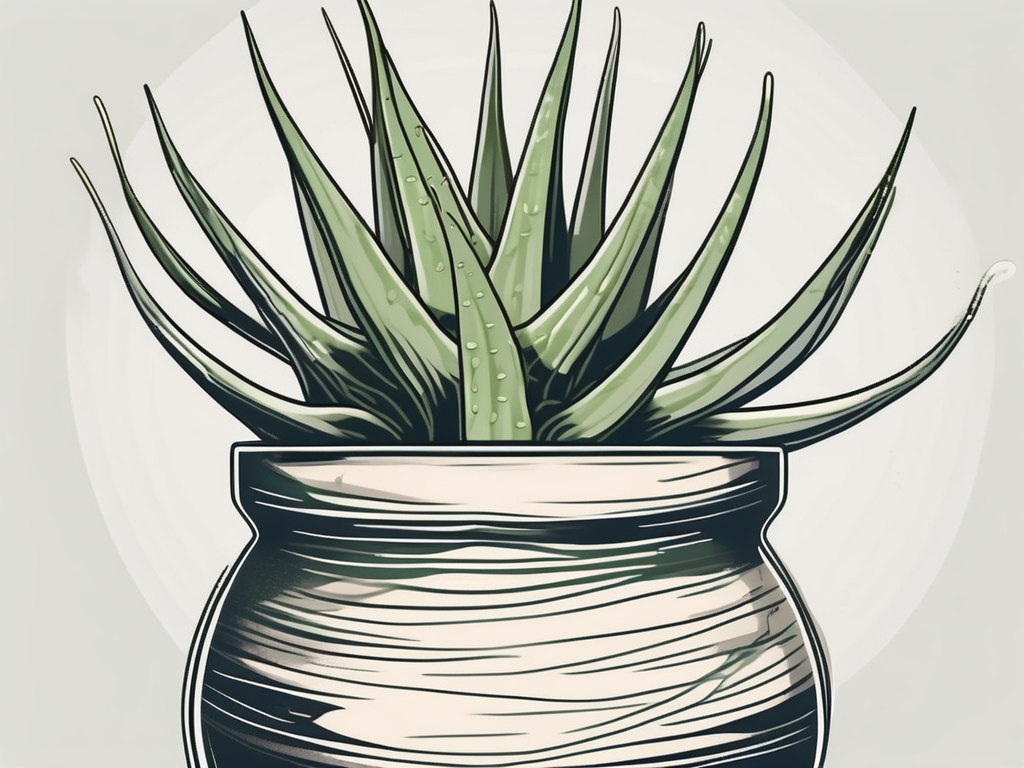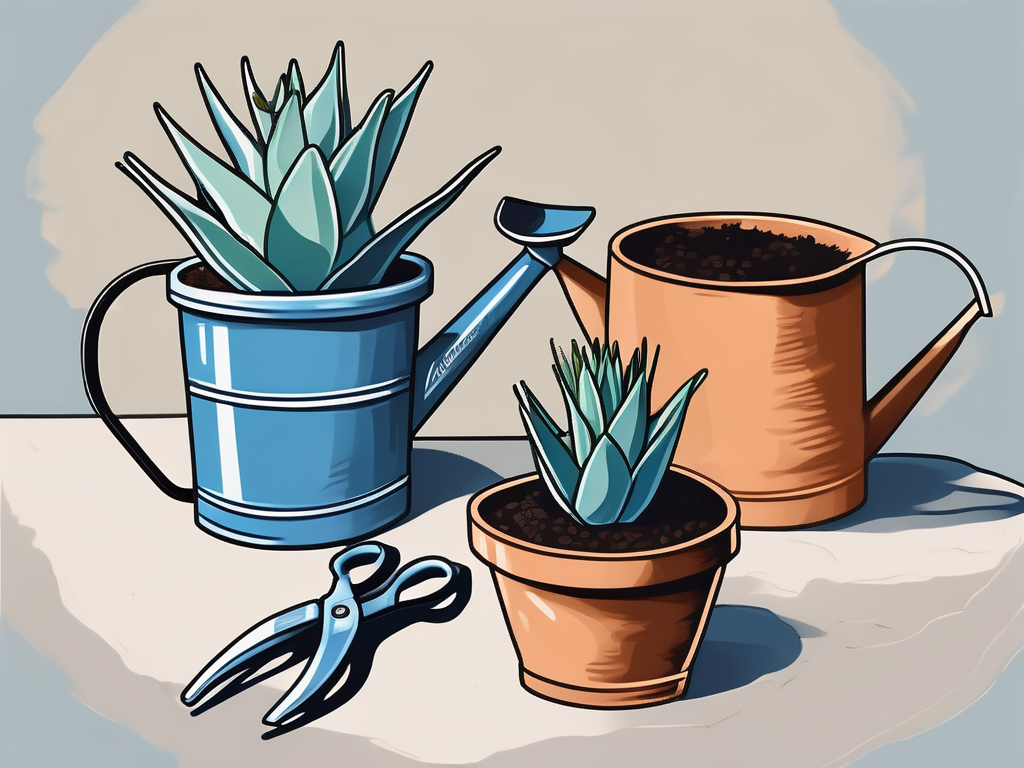
If you’re looking for a plant that’s both stunning and easy to care for, the Blue Elf Aloe might just be the perfect addition to your home. With its striking blue-green leaves and charming personality, it’s a plant that fits beautifully into any decor, whether you’re going for modern minimalism or a cozy, bohemian feel.
In this article, we’ll cover everything you need to know about the Blue Elf Aloe, from its ideal growing conditions and watering needs to potting tips and pest control. Whether you’re a seasoned plant parent or a newbie just getting started, you’ll find helpful advice and practical tips to ensure your Blue Elf Aloe thrives.
The Beauty and Charm of the Blue Elf Aloe
First off, let’s take a moment to appreciate what makes the Blue Elf Aloe so special. This little succulent is known for its compact size and mesmerizing bluish-green leaves. The leaves are often adorned with soft teeth along the edges, giving it a unique texture that adds interest to any plant collection. And when it blooms, you’re treated to vibrant orange-red flowers that stand out beautifully against the cool tones of the leaves.
In terms of aesthetics, the Blue Elf Aloe is a showstopper. Its compact form makes it perfect for small spaces, and it pairs well with other succulents or larger houseplants. It’s like the cherry on top of your plant sundae, bringing a pop of color and texture that’s hard to resist.
But beyond its beauty, the Blue Elf Aloe is a champ in the care department. It’s known for being low-maintenance, making it a great choice for those new to plant care or anyone with a busy lifestyle. So, if you’re worried about keeping your plants alive, this aloe is a forgiving friend.
Setting the Stage: Ideal Growing Conditions
Creating the right environment for your Blue Elf Aloe is key to keeping it healthy and happy. Like most succulents, this plant thrives in plenty of sunlight. Ideally, it should be placed in a spot that receives bright, indirect light. A south or east-facing window often works well. If direct sunlight is unavoidable, try to limit exposure to the cooler parts of the day to prevent scorching the leaves.
Temperature-wise, the Blue Elf Aloe prefers warm conditions. It’s happiest in temperatures ranging from 60°F to 80°F (15°C to 27°C). While it can tolerate cooler temperatures, it’s best to keep it away from drafts or sudden temperature changes, especially in winter.
Humidity isn’t a big concern for this succulent. It’s quite adaptable to average household humidity levels, which makes it easy to care for in most homes. However, if your home is particularly dry (like during winter), you might want to mist it occasionally or place a humidifier nearby.
In essence, the Blue Elf Aloe isn’t too fussy about its living conditions, as long as you provide it with enough light and keep it warm. It’s a bit like us humans—happy when cozy and basking in the sunlight!
Watering Wisdom: Keeping It Just Right
When it comes to watering your Blue Elf Aloe, less is often more. This plant has evolved to store water in its leaves, which means it can go longer between waterings than many other houseplants. Overwatering is one of the most common pitfalls, so it’s important to get the balance right.
A good rule of thumb is to let the soil dry out completely between waterings. Depending on your home’s climate and the season, this might mean watering every 2-3 weeks. During the growing season (spring and summer), you might need to water a bit more frequently, while in the winter, you can reduce watering as the plant’s growth slows down.
When you do water, make sure to soak the soil thoroughly. Allow any excess water to drain away completely to prevent root rot. It’s a bit like making sure you’re well-hydrated after a workout—give it a good drink, then let it rest.
If you’re unsure about when to water, you can use a moisture meter or simply stick your finger into the soil. If it feels dry a couple of inches down, it’s time to water. Remember, it’s easier to recover from underwatering than overwatering, so when in doubt, wait a few more days before watering.
Potting and Soil Tips
Choosing the right pot and soil is crucial for your Blue Elf Aloe’s health. Since this plant is prone to root rot if left sitting in water, you’ll want to use a well-draining potting mix. Look for a cactus or succulent mix, which is designed to provide excellent drainage.
When it comes to pots, those with drainage holes are your best bet. This allows excess water to escape, reducing the risk of soggy roots. If you have a decorative pot without drainage, consider placing the aloe in a plastic pot with holes inside the decorative one, or be very careful not to overwater.
Repotting isn’t something you’ll need to do often with a Blue Elf Aloe, as it grows relatively slowly. However, if you notice the plant becoming root-bound (where roots are circling the pot), it might be time to move it to a slightly larger pot. This usually happens every couple of years.
When repotting, gently remove the plant from its current pot and shake off excess soil. Place it in the new pot, fill with fresh soil, and water lightly to settle the roots. Think of it as giving your aloe a new home, where it can stretch its roots and continue to thrive.
Feeding Your Blue Elf Aloe: Fertilizer Facts
While the Blue Elf Aloe doesn’t require a lot of feeding, giving it a little boost now and then can support its growth and flowering. During the growing season (spring and summer), you can fertilize your aloe once a month with a balanced houseplant fertilizer or a specific cactus/succulent fertilizer.
It’s important to dilute the fertilizer to about half the recommended strength to avoid over-fertilizing, which can damage the plant. Just like us, plants can have too much of a good thing, so moderation is key.
In the fall and winter months, you can hold off on feeding. The plant’s growth slows down during this time, and it doesn’t need the extra nutrients. Think of it as giving your plant a little winter break!
Feeding your Blue Elf Aloe is like providing a little extra sunshine on a cloudy day—just a little goes a long way in keeping it vibrant and healthy.
Pest Patrol: Keeping Your Aloe Healthy
One of the joys of caring for a Blue Elf Aloe is its resistance to pests. However, like any plant, it can occasionally fall victim to unwanted visitors. Common pests include aphids, mealybugs, and spider mites.
If you notice any pests, it’s important to act quickly. You can start by gently washing the plant with soapy water or using a soft cloth to wipe away the insects. For more stubborn infestations, a neem oil spray can be effective. It’s a natural solution that’s safe for the plant and your home environment.
Regularly inspecting your aloe and keeping it clean can prevent pest problems from getting out of hand. Just like checking in with a friend, a little attention can go a long way in keeping your plant happy and healthy.
Remember, a healthy plant is less likely to attract pests in the first place. By providing the right care and environment, you’re setting your Blue Elf Aloe up for success. It’s like building a fortress against those pesky invaders!
Styling Your Space with Blue Elf Aloe
Integrating the Blue Elf Aloe into your home decor is a breeze. Its compact size and striking appearance make it a versatile addition to any room. Whether you place it on a sunny windowsill, a bookshelf, or a coffee table, it’s sure to draw attention.
For a cohesive look, consider grouping your aloe with other succulents or plants that have similar care requirements. This not only creates a visually appealing display but also simplifies your plant care routine.
You can also get creative with pot selection. Choose pots that complement your existing decor or add a splash of color with a bold, bright container. The contrast between the plant’s cool tones and a vibrant pot can be quite striking.
Ultimately, your Blue Elf Aloe should reflect your personal style and bring a touch of nature into your living space. It’s like adding a piece of living art to your home.
Troubleshooting Common Issues
Even the most experienced plant parents encounter issues from time to time. If your Blue Elf Aloe isn’t looking its best, there are a few common problems to check for.
Yellowing Leaves: This can be a sign of overwatering. Make sure the soil is drying out completely between waterings and adjust your schedule if necessary.
Brown Leaf Tips: If the leaf tips are turning brown, it could be due to underwatering or low humidity. Ensure you’re watering adequately and consider misting the plant occasionally.
Leggy Growth: If your aloe is stretching or becoming leggy, it’s likely not getting enough light. Move it to a brighter spot where it can soak up more sun.
By paying attention to these signals, you can make the necessary adjustments to keep your plant thriving. It’s like listening to what your plant is trying to tell you and responding with a little TLC.
Final Thoughts
Caring for a Blue Elf Aloe is a rewarding experience filled with vibrant colors and unique textures. From choosing the right spot in your home to understanding its watering needs, each step ensures your plant stays healthy and beautiful.
At Cafe Planta, we’re passionate about helping you find the perfect plants for your home. If you have any questions or need more tips, feel free to email us or send a DM on Instagram. We believe that plants bring joy and connection, and we’re excited to support you on your plant journey!















